Ensuring our pets are joyful and in good health doesn't have to weigh heavily on our finances. We all aspire to build a distinctive area for our beloved pets—a zone for frolic, leisure, and exploration.
But, the expense often encourages a second thought.
Fortunately, I happened upon something exceptional! Through researching DIY alternatives for cat walls, I unearthed ways to construct an indoor fun zone that keeps monotony away and addresses frequent issues such as obesity and aggression.
This guide will assist you in establishing an energetic corner with cat shelves, sisal rope climbers, and cozy lounging corners—all without straining your finances. Let's commence some adventurous projects together!
Key Takeaways
- Making a DIY cat wall saves money and space. Use simple items like bath mats, wooden crates, and unused wood for climbing structures.
- Cat walls can have shelves, platforms, scratching posts, hammocks, and ramps to keep cats active and happy. Measure carefully for safe jumping heights.
- Secure everything well with strong screws into studs or concrete walls. Check often to make sure all parts are safe for your cat.
- Keep the cat wall clean by using easy-to-wash materials. Change or update parts when needed to keep it fun for your cat.
- Play areas like these help prevent boredom and encourage exercise, which is good for your cat's health.
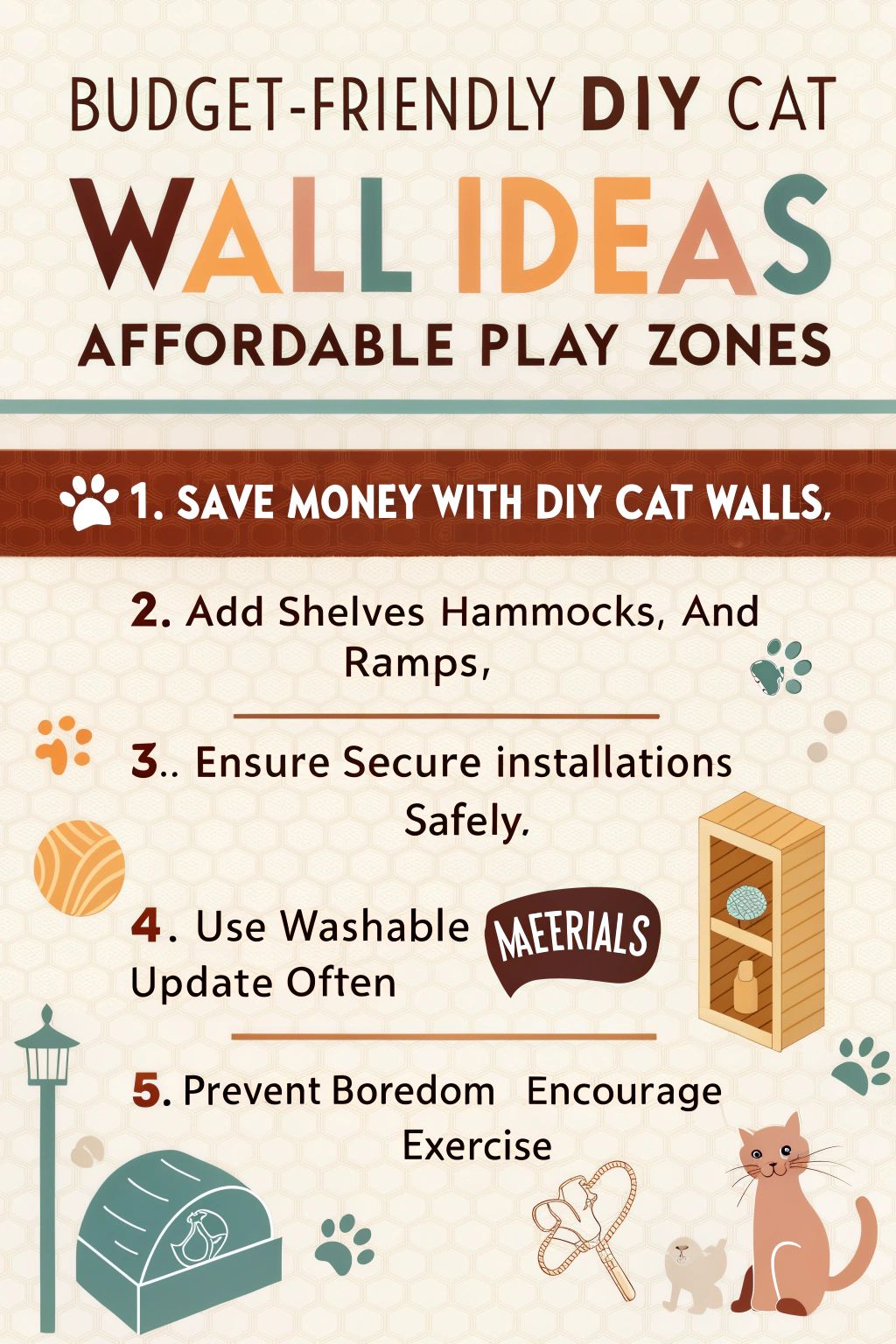
Planning Your DIY Cat Wall
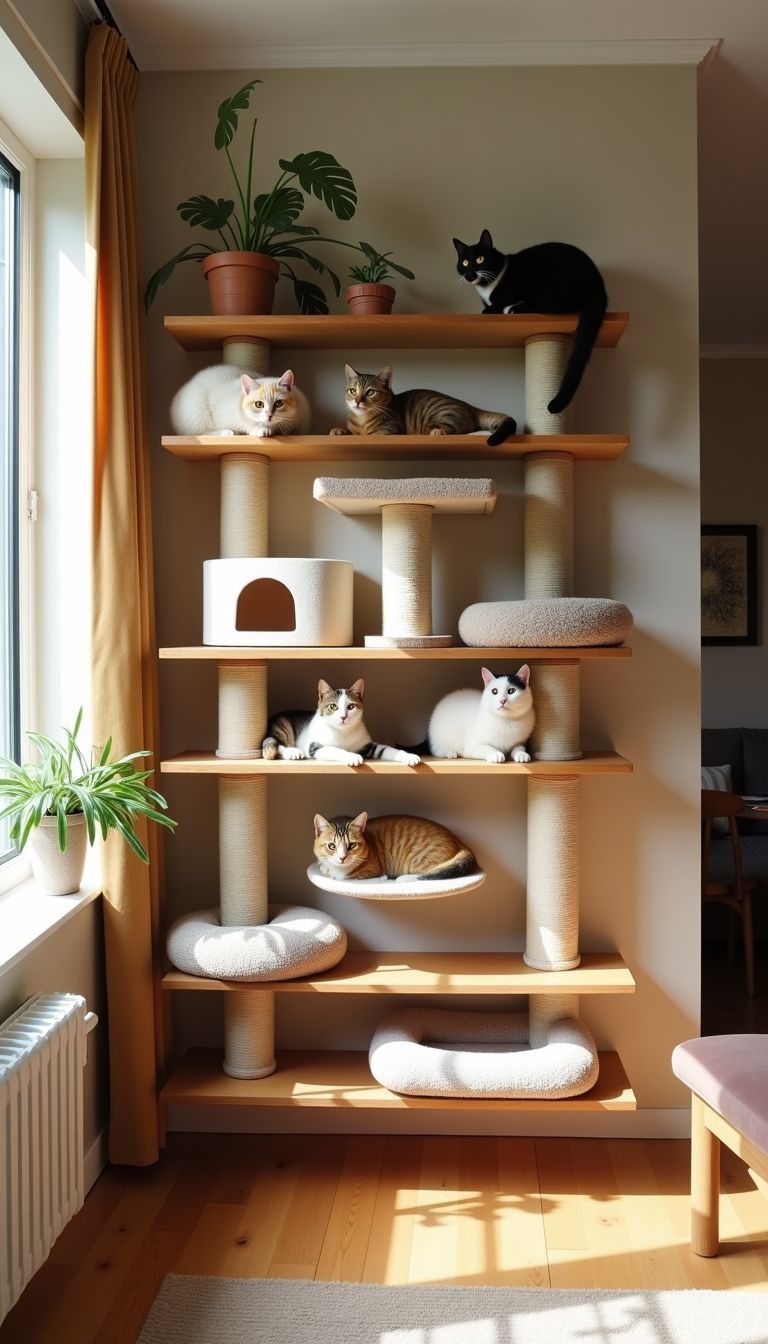
First, take a good look at your room and think about what your cat loves. Pick materials that don't cost much but last long.
Assessing the space and your cat’s needs
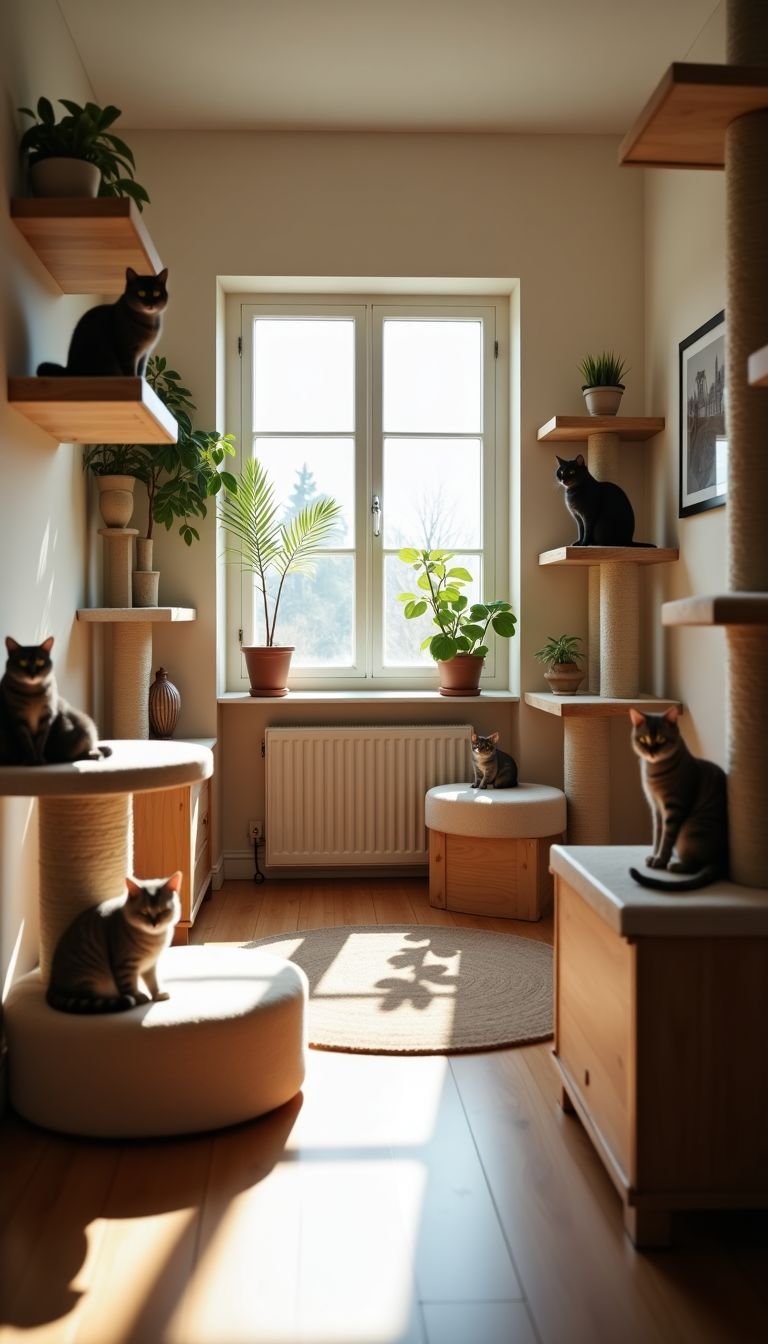
I start by measuring my room. I find where the wooden beams in the walls are with a stud finder. This helps me know where I can safely attach things. Then, I use painter’s tape to mark paths on the wall.
This step is important because cats like to explore different pathways. It also keeps them from fighting over space.
Cats have their own likes and energy levels. Some enjoy high spots while others prefer cozy corners near the ground. Considering these things lets me create a mix of high and low cat perches, bridges, and ramps that suit every cat's taste.
Every cat is unique—think about what makes your feline friend happiest.
For younger or very active cats, adding more challenging elements like vertical climbers or deluxe forts keeps them busy. On the other hand, older cats might appreciate easier-to-reach spaces or softer resting places like hammocks and cat cubby with perches for comfort.
Choosing cost-effective materials
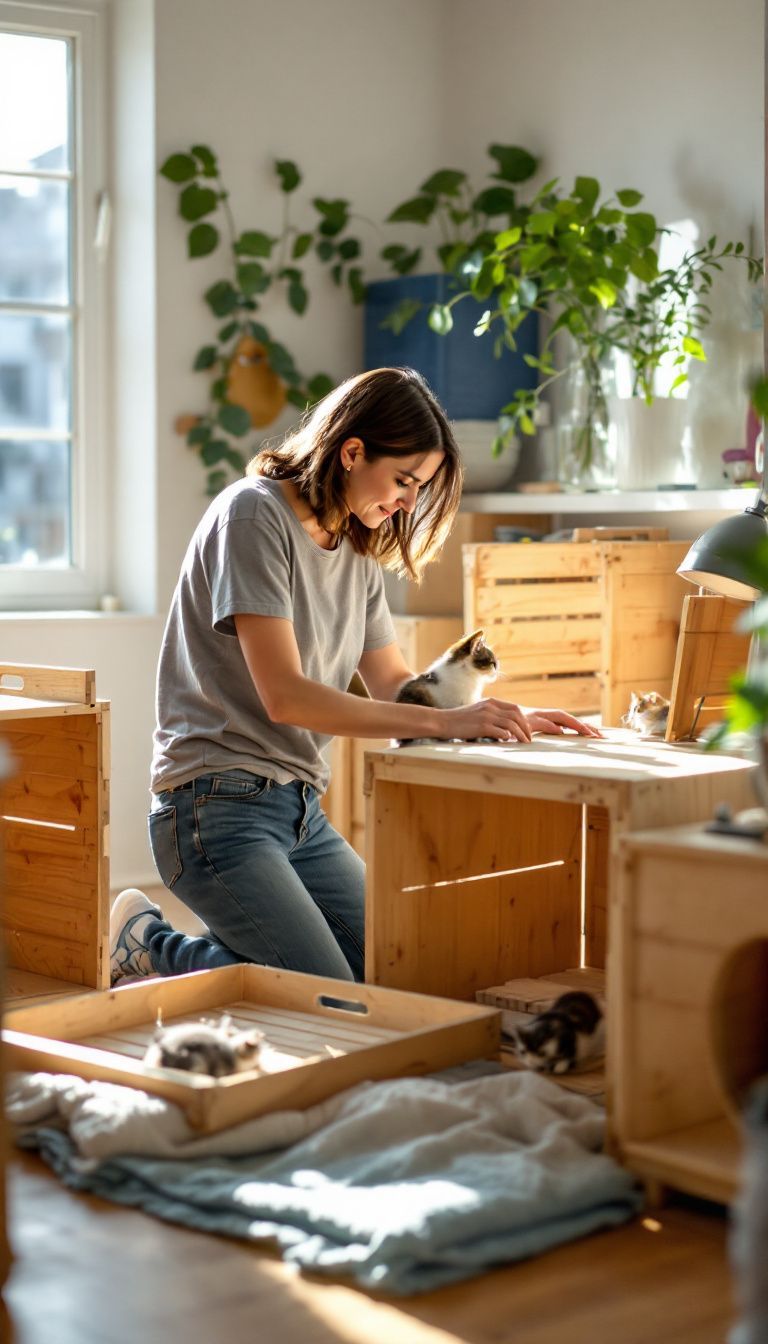
Cost-effective materials can make a big difference for my cat wall. I like to check for items that won’t break the bank. Bath mats are great! They provide soft and grippy footholds, making play safe and fun.
Wooden crates work well too. I can mount them on the wall as cozy shelters for my cats. Unused wood scraps are perfect for climbing structures. With little cost, I create an indoor cat playground that keeps my furry friends active and healthy.
Essential Components for a Basic Cat Wall
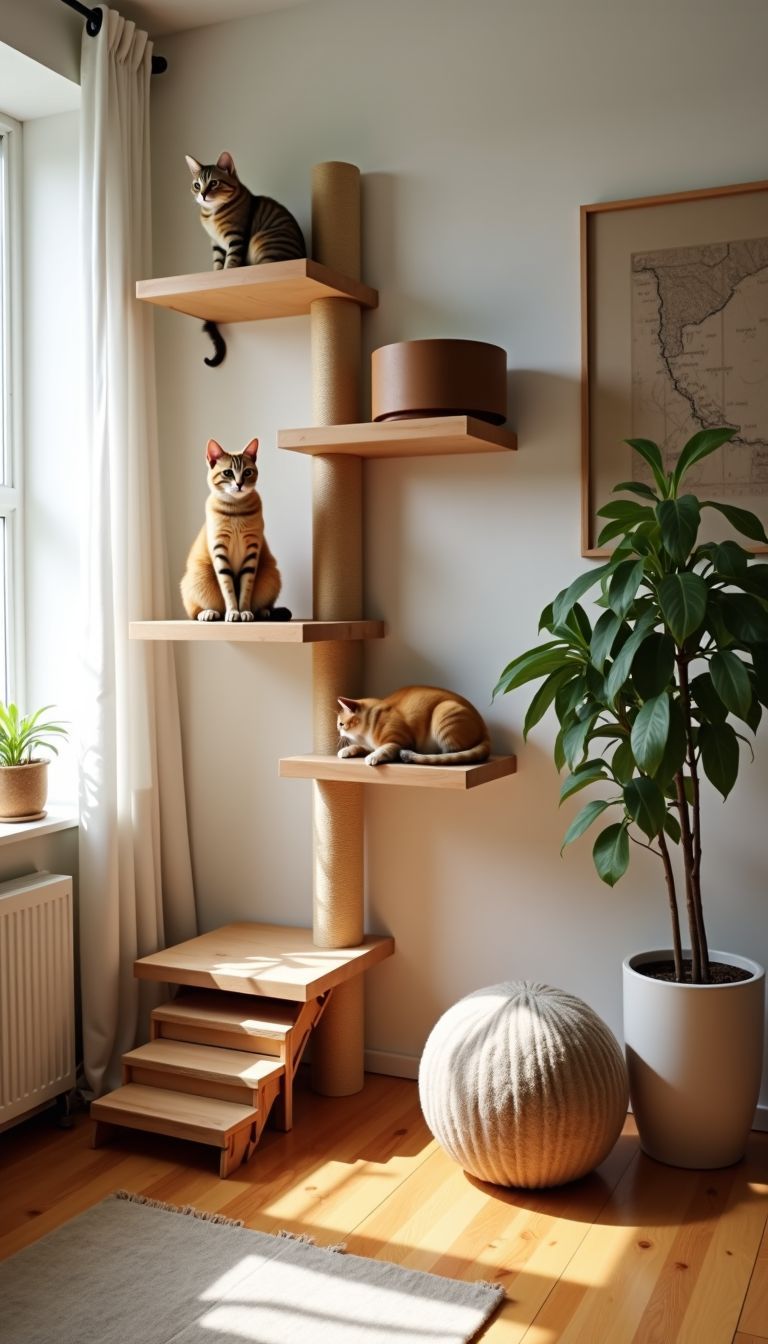
A cat wall needs shelves and platforms. These help your cat climb and relax high up. You can also add scratching posts to keep their claws healthy. This mix offers fun and exercise for your furry friend….
Shelves and platforms
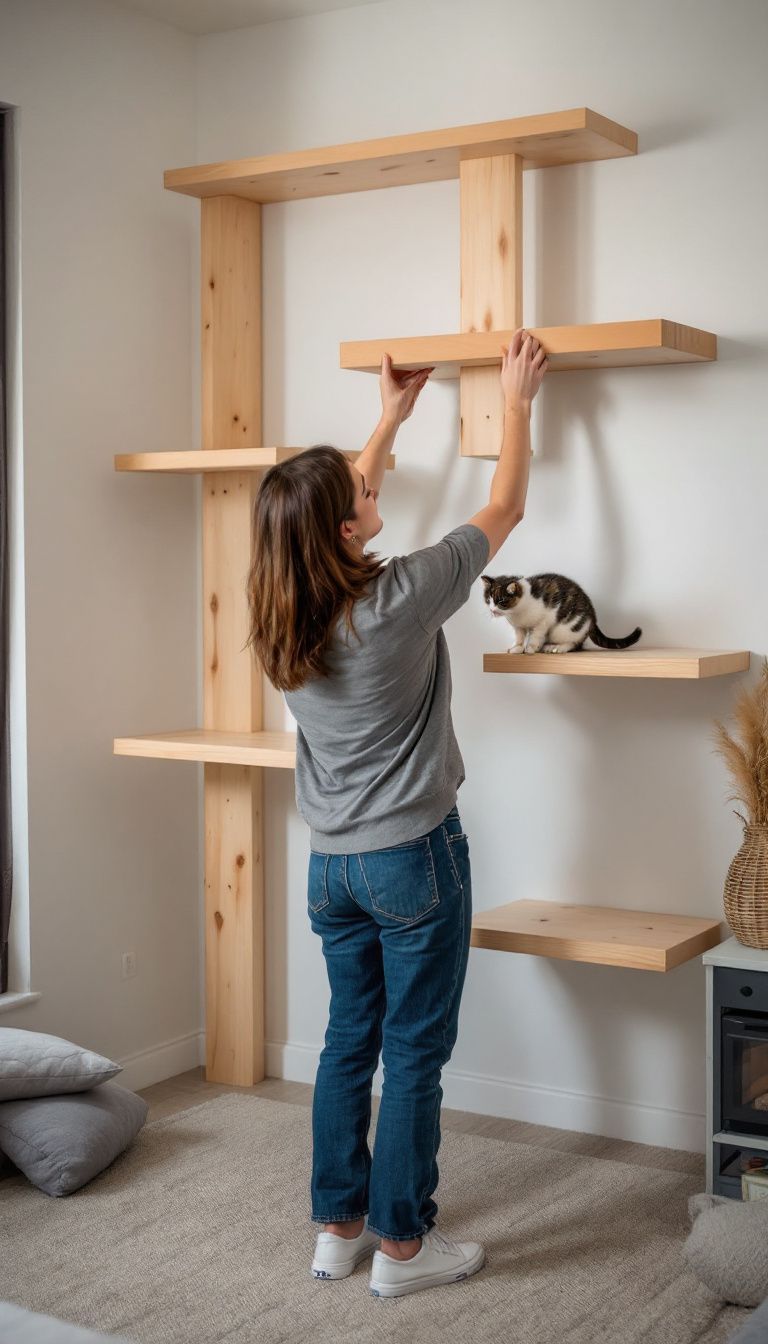
Shelves and platforms are great for creating a fun cat wall. I like to place them 14 inches off the ground. This height allows my cats to jump up easily but still feel safe. The spacing between shelves should be about 12 to 18 inches apart.
This gives them enough room to climb and explore.
I often use sturdy wood or plywood for these surfaces. They provide a solid space for my cats to nap or play. Corners work well as perches too; they give my cats a higher spot to watch everything below.
A good design helps with their physical health and also keeps them entertained… Next, I will discuss integrating scratching posts into your DIY cat wall!
Scratching posts integrated into the design
Building scratching posts into your cat wall is smart. It saves space and keeps things neat. Sisal rope makes a great surface for cats to scratch. I love using this material because it holds up well, and my cat enjoys it.
Molly Kamper shows how to blend scratches with style. Her designs include fun wall decorations that also serve as scratching posts. Wooden embroidery hoops can be a creative choice too.
They are simple yet effective for keeping claws busy.
This way, your cat gets the exercise they need while enjoying their own area… It's all about creating an engaging environment without breaking the bank!
Innovative Cat Wall Features

Cats love to climb and hide. I can create fun features for them on the wall.
Hammocks give a cozy spot to rest. Ramps offer a path for jumping and playing. Cats will enjoy these safe, playful spaces!
DIY hammocks and hideaways
DIY hammocks can be a fun project. I made one on June 15, 2017. I used wood and canvas for mine. First, I cut the wood with a miter saw. Then, I sewed the canvas using my sewing machine.
Hideaways are great for cats too. They love small spaces where they can relax or nap. You can use simple boxes or build cozy corners in your cat wall design. This gives them safe spots to play or hide away when they need some peace…
It’s all about creating a space that feels special for them!
Bridges and ramps for active play
Bridges and ramps bring fun to a cat wall. They help my cats play and explore high spaces safely. I can place bridges over doorways, creating new paths for them. This setup allows my cats to avoid conflicts by giving multiple routes.
A corner cat bridge is great too. It fits snugly in corners, making use of space that often goes unused. Proper installation is key for safety and stability… I always check that everything is secure before letting my cats play on it!
Construction Tips
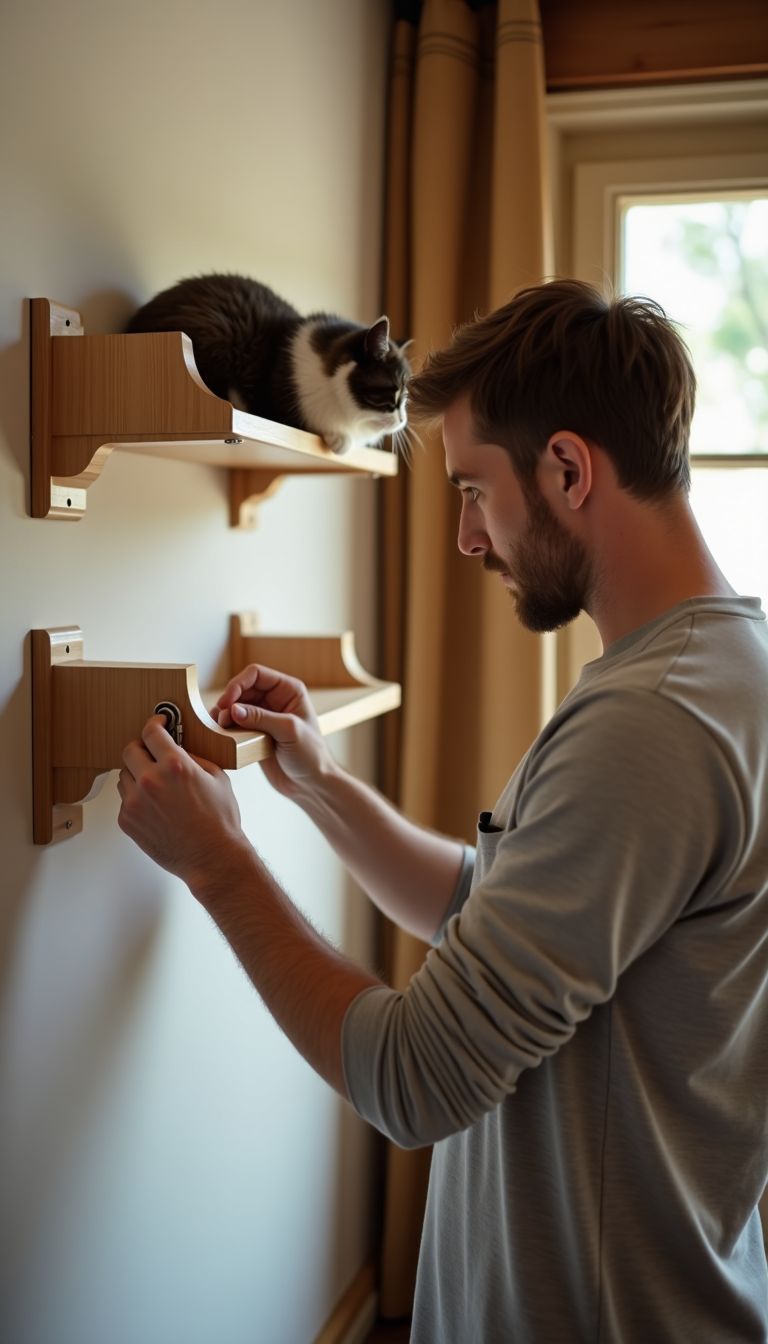
Check your work often. Make sure everything is safe and secure for your cat. Use strong screws and anchors to hold up shelves. Keep the design simple, but fun!
Securing fixtures safely
I focus on securing fixtures safely to keep my cat's play area safe. I always mount shelves into sturdy supports, like studs or concrete. Drywall alone is not strong enough for this task.
Platforms should start about 14 inches off the ground. This height helps my cat jump easily and feel secure.
I take extra care when placing hammocks over doorways. Accurate plank placement is key here. It keeps the hammock steady and safe for jumping in and out. My cat loves a good hideaway up high, so I make sure everything feels stable before letting them explore their new space.
Safety comes first…then fun!
Using space efficiently
Using space well makes a big difference. I can use floating shelves for climbing fun. These shelves give my cat new spots to explore. Pine board shelves work great as custom landing pads.
I like to add squares for padding too; they look nice and keep my kitty safe.
I make sure that all shelves are securely attached. This way, there’s no risk of them falling over while my cat plays or rests. It helps to think about corners and vertical space in the room.
Using every inch wisely creates an exciting play zone for my furry friend….
Maintenance and Upkeep
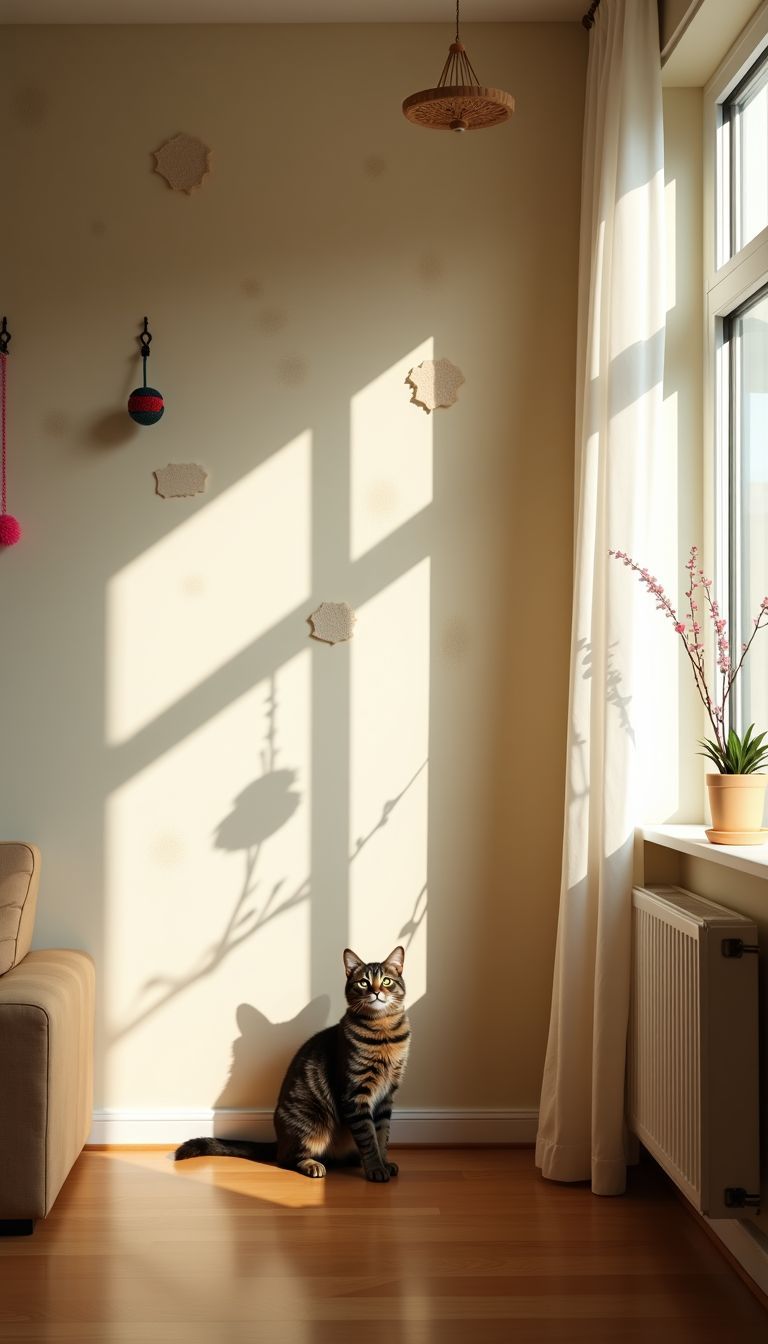
Keeping your cat wall clean is easy. Regularly wipe down surfaces and check for wear—replace any damaged parts right away to keep it safe.
Easy to clean and update designs
Cleaning and updating your cat wall should be easy. Removable covers for hammocks help with quick cleaning. Just take them off, wash them, and put them back on. It saves time and keeps things fresh for my cat.
Shelves should also be simple to reach. I make sure they are easily accessible for cleaning. Smooth surfaces reduce dust and hair build-up too. This makes upkeep much easier. A modular design allows me to change or expand the setup anytime…
making it fun for my kitty!
Conclusion
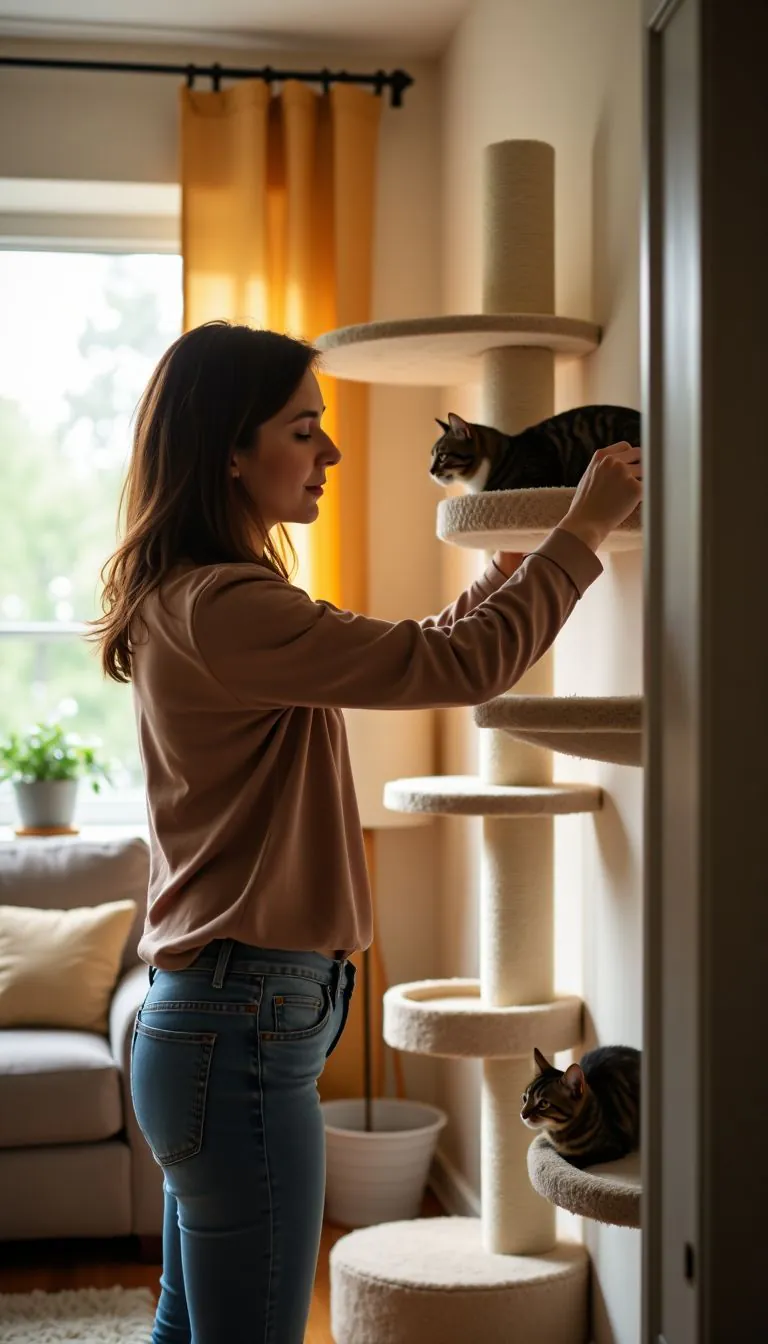
I love creating play zones for my cats. DIY cat walls are fun and budget-friendly. They keep my pets happy and active. I can use simple materials to make shelves, hammocks, and ramps.
My cats enjoy climbing and exploring their new space…and I feel great knowing they have a safe place to play!
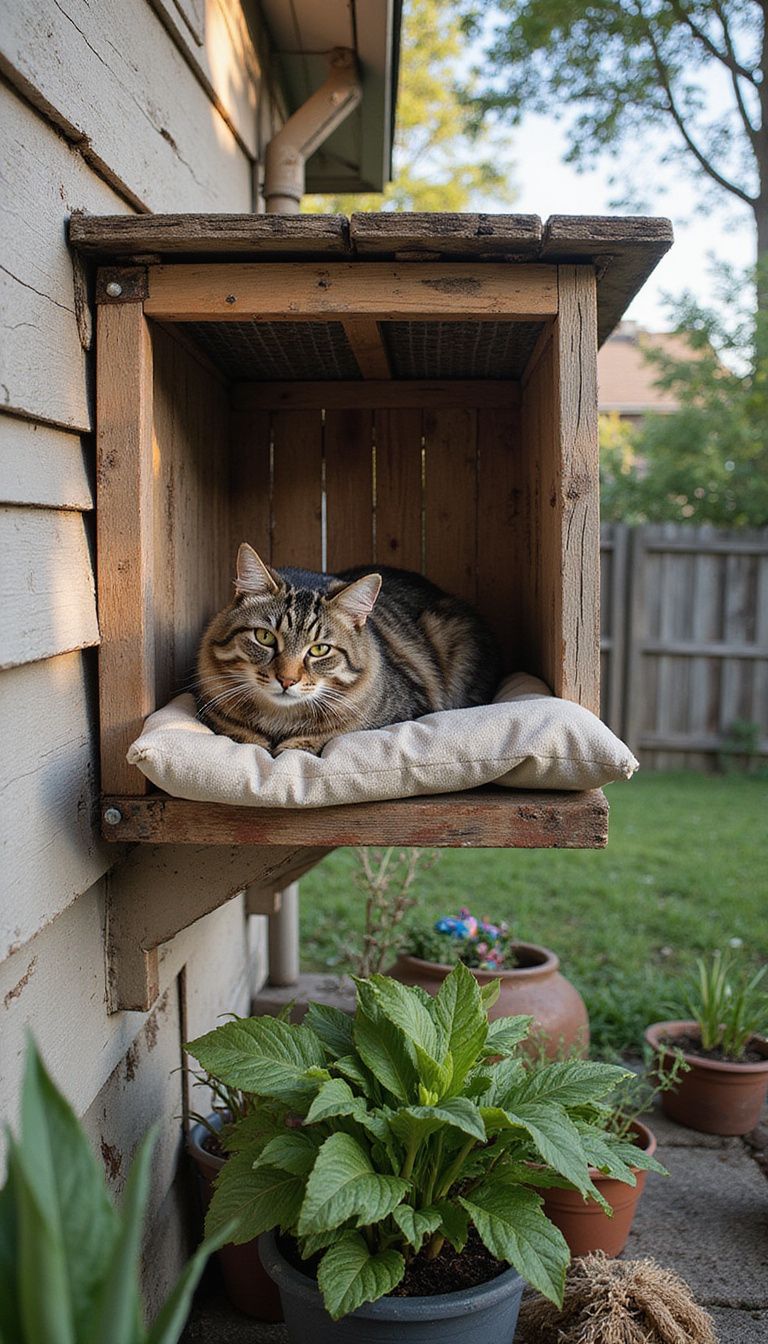

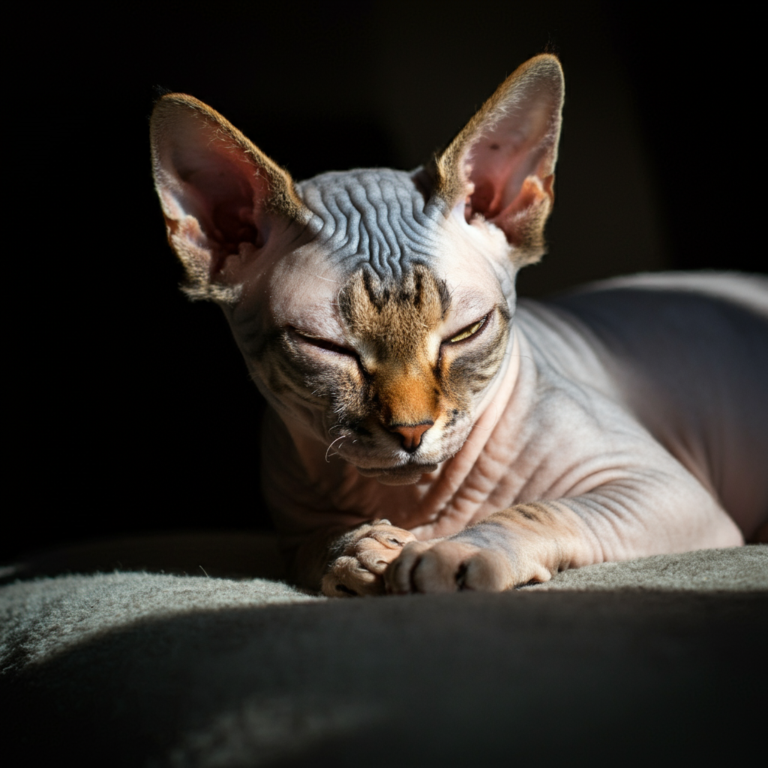
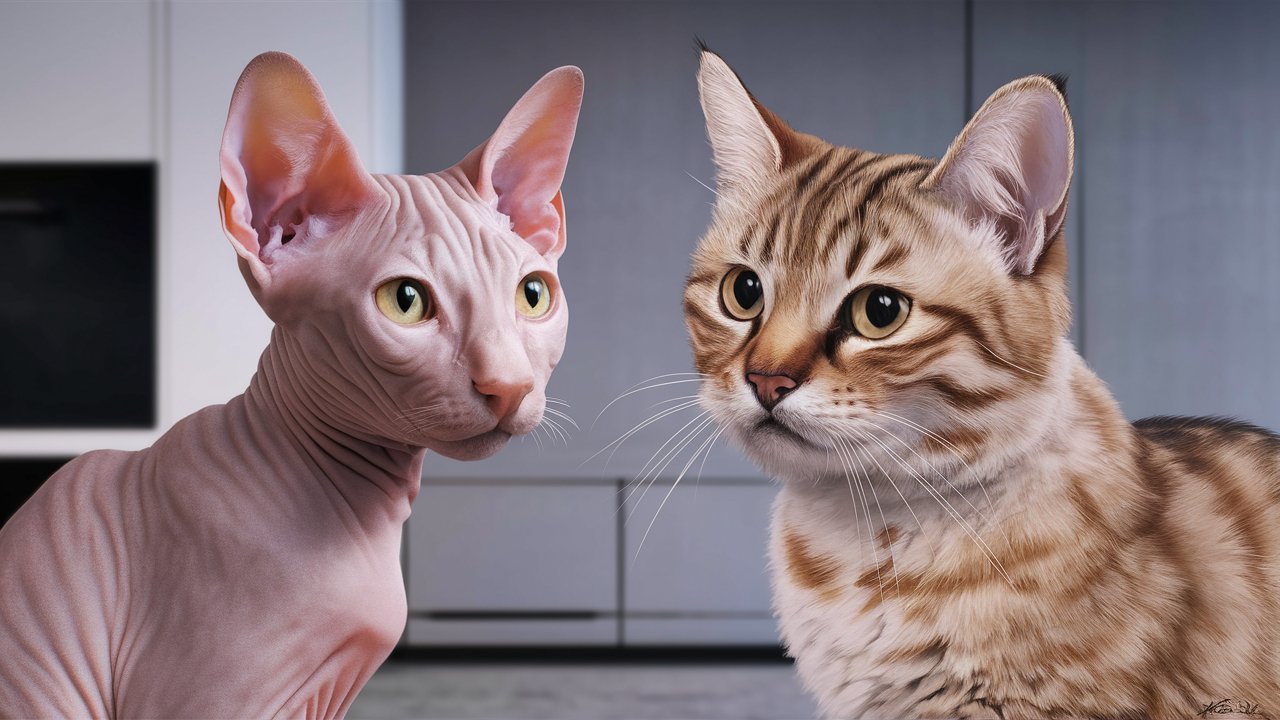


Leave a Reply